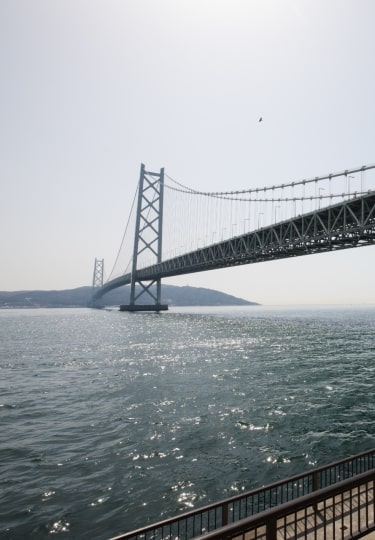Japan is full of famous attractions, but many can be the victim of that very fame. So seeking out off-the-beaten-path Japan is a great way to discover unusual and uncrowded sights.
These can range from tranquil temples to historical towns. You might also be surprised to find samurai gardens or an abandoned factory island.
There are also places of great natural beauty, from wonderful waterfalls to scenic national parks. You might also come across a giant Buddha, or a museum dedicated to a spectacular festival on your quest to discover Japan off the beaten path.
Hirosaki Castle, Aomori
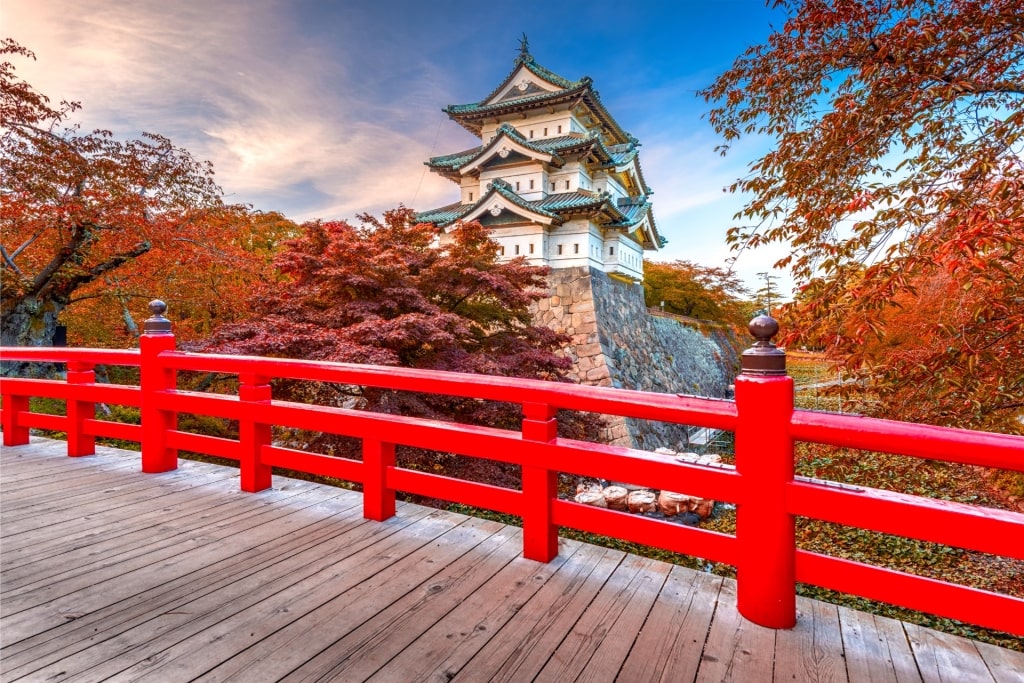
Hirosaki Castle, Aomori
Sitting within a vast park filled with 2,500 cherry trees, Hirosaki Castle is one of the most beautiful places in Japan. The current tenshu, or keep, dating to 1810, is one of only 12 in Japan surviving from that era.
The castle was originally built in 1611 as the seat of the powerful Tsugaru clan. A small museum featuring some interesting samurai artifacts will tell you more about its history.
As well as the three-story tenshu, there are several guard towers and a moat filled with colorful koi fish. The surrounding stone wall also has some photo-worthy gates.
Nebuta Wa-Rasse, Aomori

Nebuta Wa-Rasse, Aomori
Nebuta Matsuri in Aomori every August is one of Japan’s most famous summer festivals. You can catch a flavor of it in the Nebuta Museum Wa-Rasse, and even try your hand at taiko drumming.
Five of the enormous floats called “nebuta” are on display, each depicting mythical warriors, or scenes from history. Made of painted washi paper over a wire frame, they are lit from inside by hundreds of bulbs.
It’s incredible to study them up close, seeing details that are much harder to appreciate during the parade. Afterward, enjoy the museum restaurant and its great views of Mutsu Bay.
Arima Onsen, Kobe
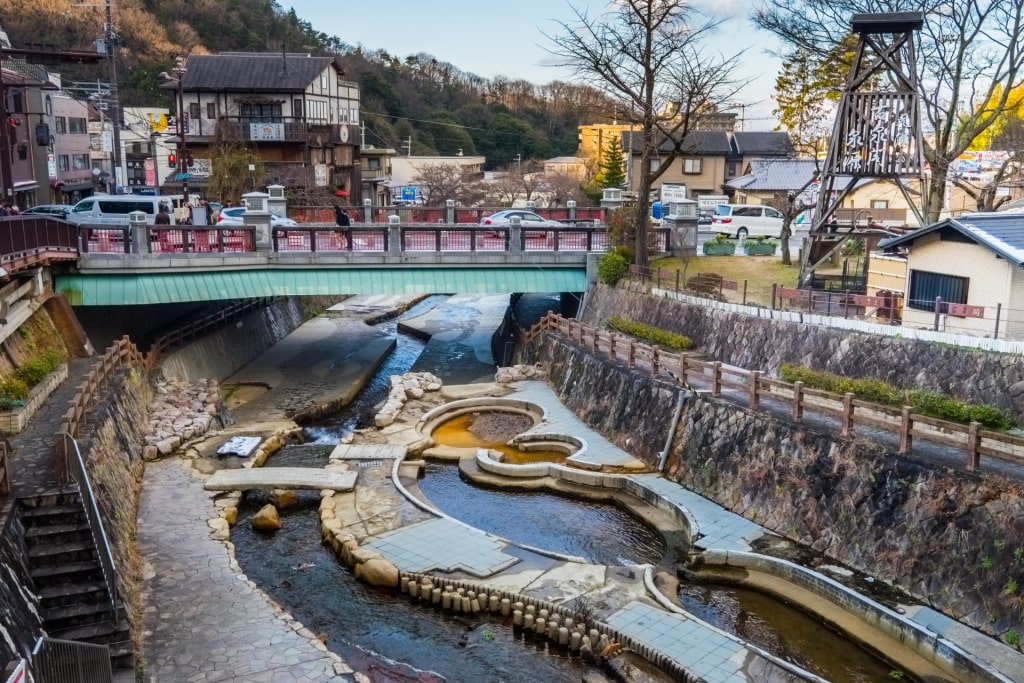
Arima Onsen, Kobe
Arima Onsen, just north of Kobe, is one of Japan’s oldest hot spring towns. It is mentioned in the Nihon Shoki, the Chronicles of Japan, from the 8th century.
The onsen is known for its reddish-brown “gold” water, and clear “silver” water. Each is said to have its own healing benefits, and there are numerous bathhouses for visitors.
The town center is perfect for strolling around, with narrow lanes lined with shops, cafés, and traditional buildings. Local specialties include Arima cider, flavored with the spring water, and Tansan senbei, an unusual rice cracker.
Akashi Kaikyo Bridge, Kobe
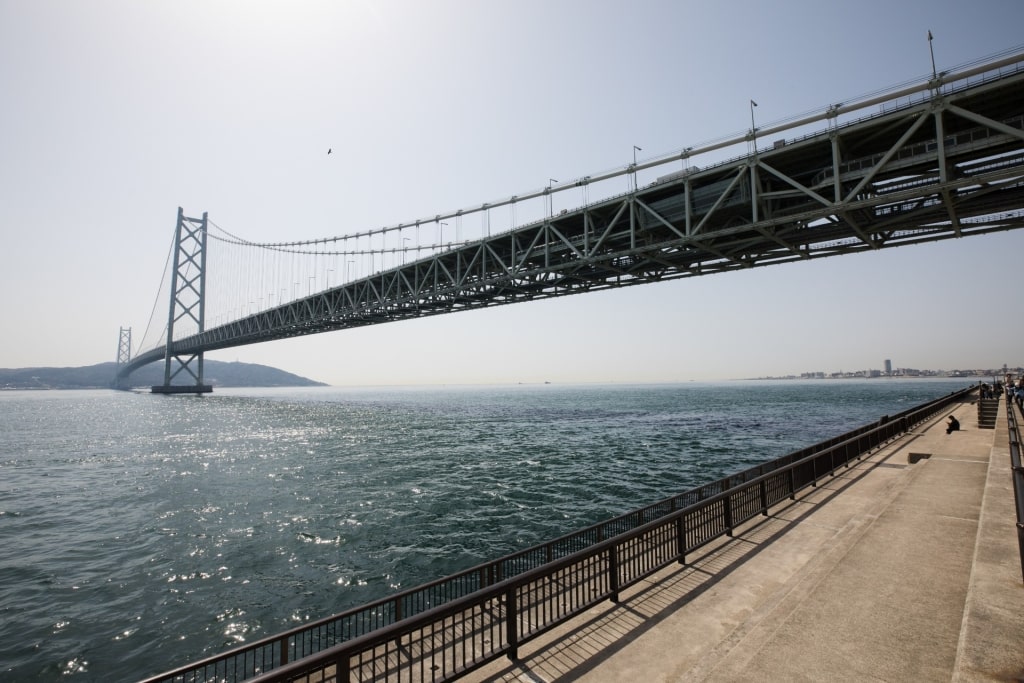
Akashi Kaikyo Bridge, Kobe
One of the best things to do in Kobe is to visit the Akashi Kaikyo Bridge, the world’s longest suspension bridge, with a total length of two and a half miles. It crosses the turbulent Akashi Strait between Kobe and Awaji Island.
The Bridge Exhibition Center on the Kobe side will give you many more facts about the bridge and its construction. If you have a head for heights, you can also join a tour to stand in the open air atop one of the world’s tallest bridge towers.
Slightly more sedate is the enclosed Maiko Marine Promenade underneath, from where you have views of the Seto Inland Sea and Awaji Island. Several sections of glass deck let you look down directly into the sea, 155 feet below.
Nunobiki Herb Garden, Kobe
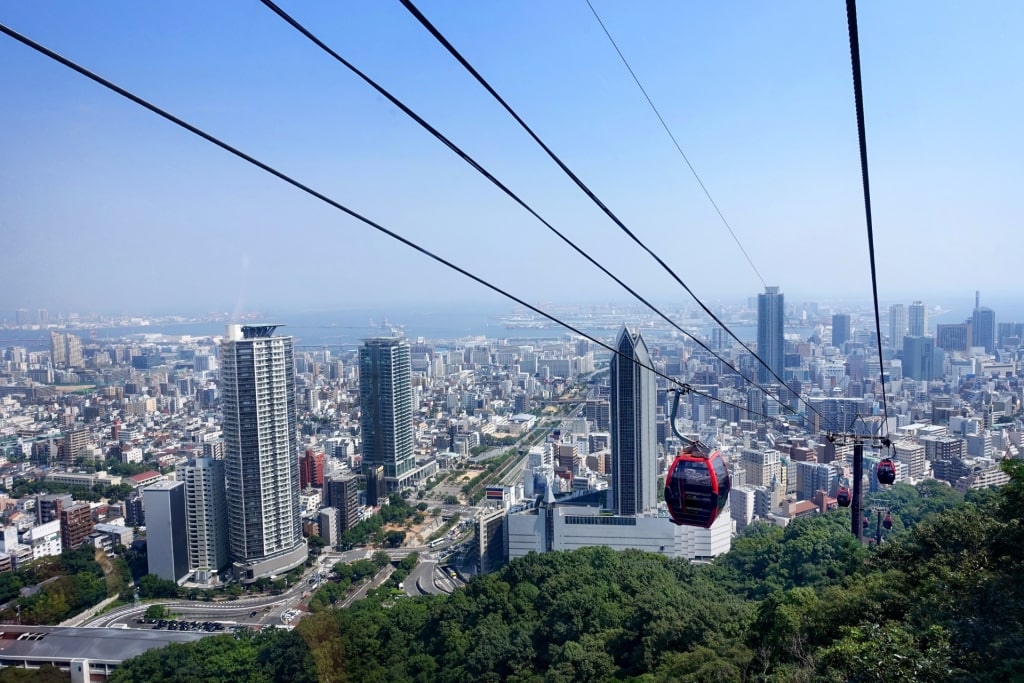
View from Nunobiki Herb Garden, Kobe
A herb garden might not sound very exciting but Nunobiki is a very special place. It’s reached by a ropeway and visitors enjoy great views of Kobe and Osaka Bay just to reach this scenic spot on Mount Rokko.
The garden has more than 75,000 herbs and flowers and is particularly beautiful when blooming in spring and fall. There are a number of themed areas, including a Rose Garden and Lavender Field.
The on-site restaurant specializes in dishes using fresh herbs from the garden. A Fragrance Museum goes even further into herbs, and has some beautiful antique perfume bottles.
Read: Why Visit Japan in the Fall
Chiran Samurai District, Kagoshima
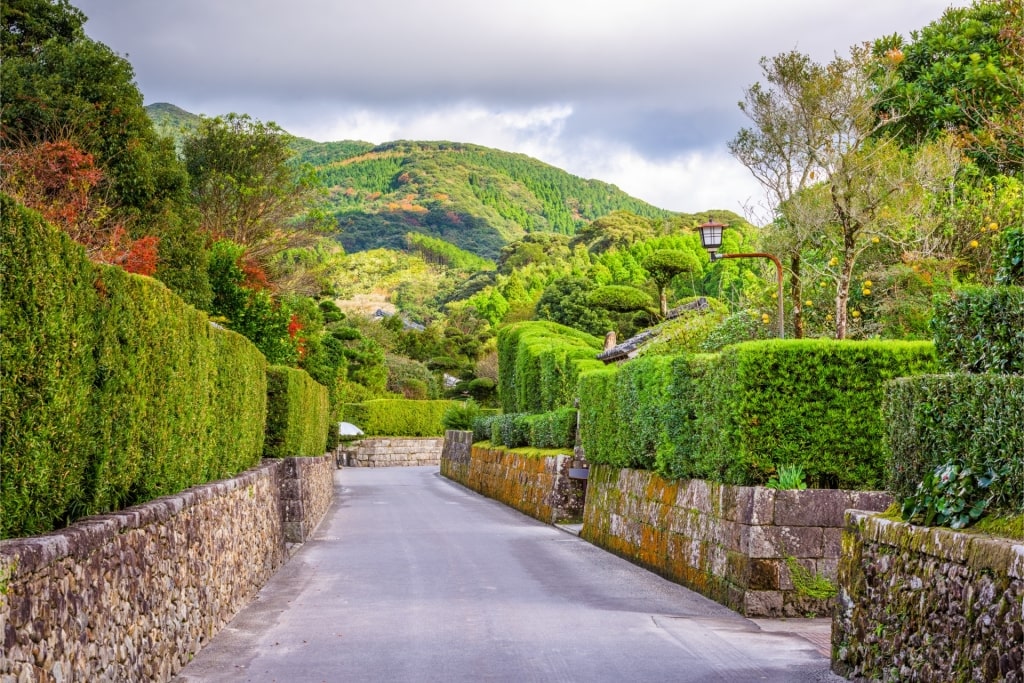
Chiran Samurai District, Kagoshima
Chiran is well-known for its Peace Museum, based on the site of a former WWII “Kamikaze” air base. Less visited is the area’s well-preserved samurai district, which has houses and gardens from the Edo Period, 1603-1867.
The Chiran Samurai Gardens are some of the best examples of their kind in Japan. Seven are open to visit, mostly in the Karesansui “Zen Garden” style.
These Samurai Residences all date to before 1867, after which this class of warrior was abolished. The Nomura house has been faithfully restored, so visitors can see how these high-ranking officials lived back then.
Sengan-en Garden, Kagoshima
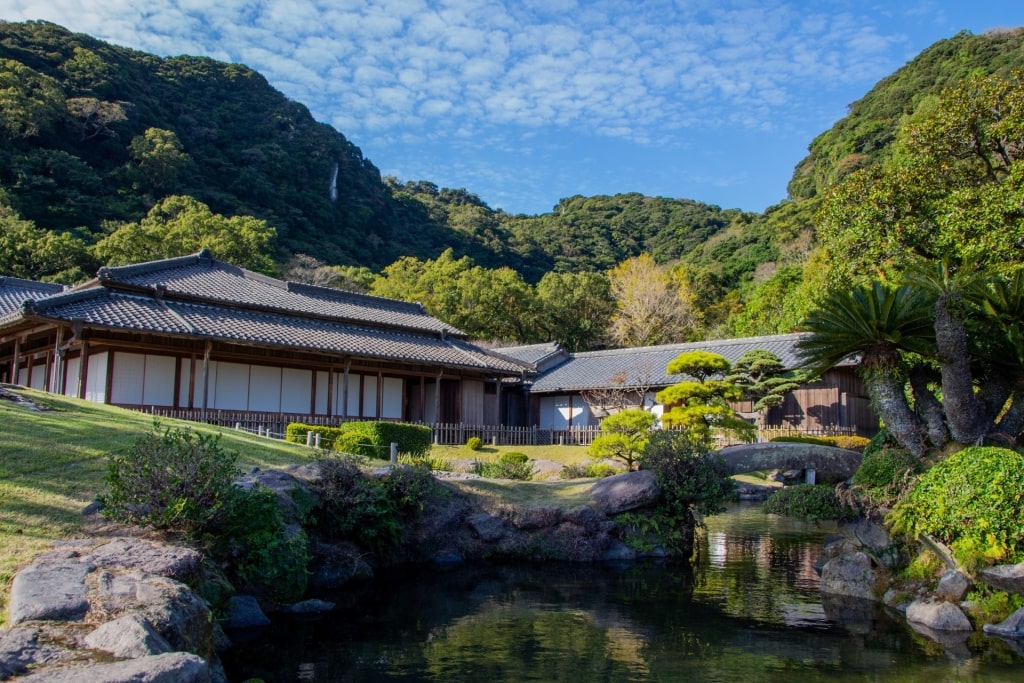
Sengan-en Garden, Kagoshima
This historic garden in Kagoshima City was first laid out in 1658 by the powerful Shimazu clan. It uses the “borrowed” views of Sakurajima, an active volcano, and Kagoshima Bay to great effect.
One of the best places to visit in Japan, Sengan-en is a traditional Japanese landscape design, with meandering paths, quiet ponds, and flowing water. There are several historic buildings, including a guest house that once hosted visiting dignitaries.
There is also an interesting museum that highlights this area’s important role in Japan’s early industrialization. Kagoshima might now be off the beaten path Japan, but some of the country’s first Western-style shipyards and factories were built here.
Ibusuki Sand Bath, Kagoshima
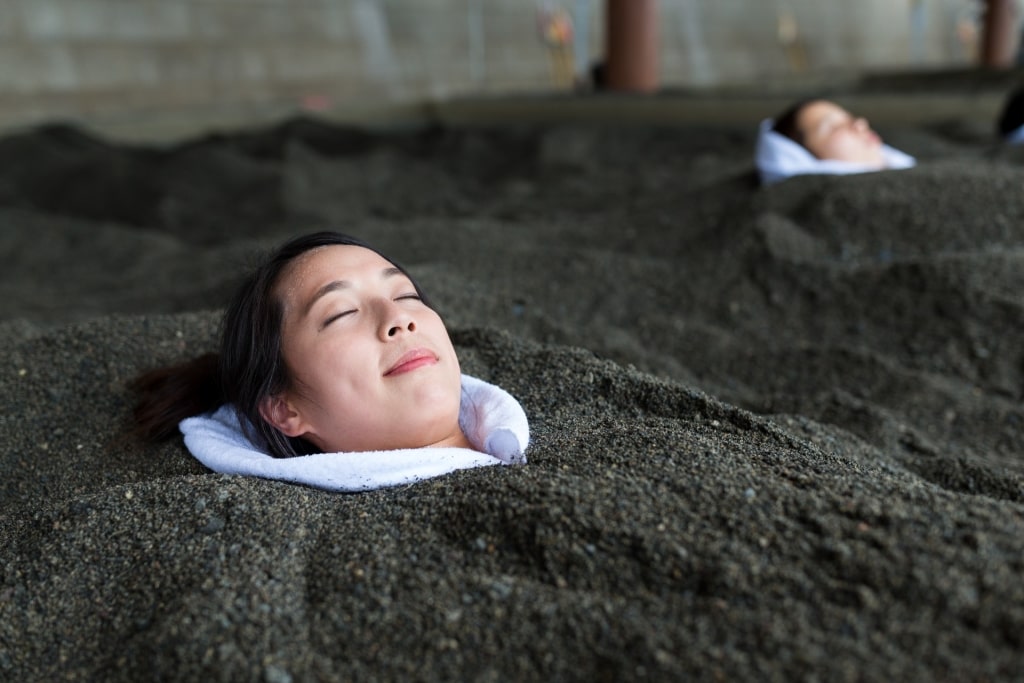
Ibusuki Sand Bath, Kagoshima
It’s a strange but rather lovely experience to lie buried in very warm black sand. Try it for yourself in Ibusuki Sand Bath, which uses natural geothermal activity to heat volcanic sand.
Visitors are given a lightweight yukata robe and lie down on a reserved beach area before attendants cover them up. The sand’s temperature ranges from 122 to 131ºF and sessions last up to 15 minutes.
The heat is designed to promote detoxification and is very relaxing. After the sand bath, you can shower and perhaps enjoy the regular hot spring baths.
Itoshima Peninsula, Fukuoka
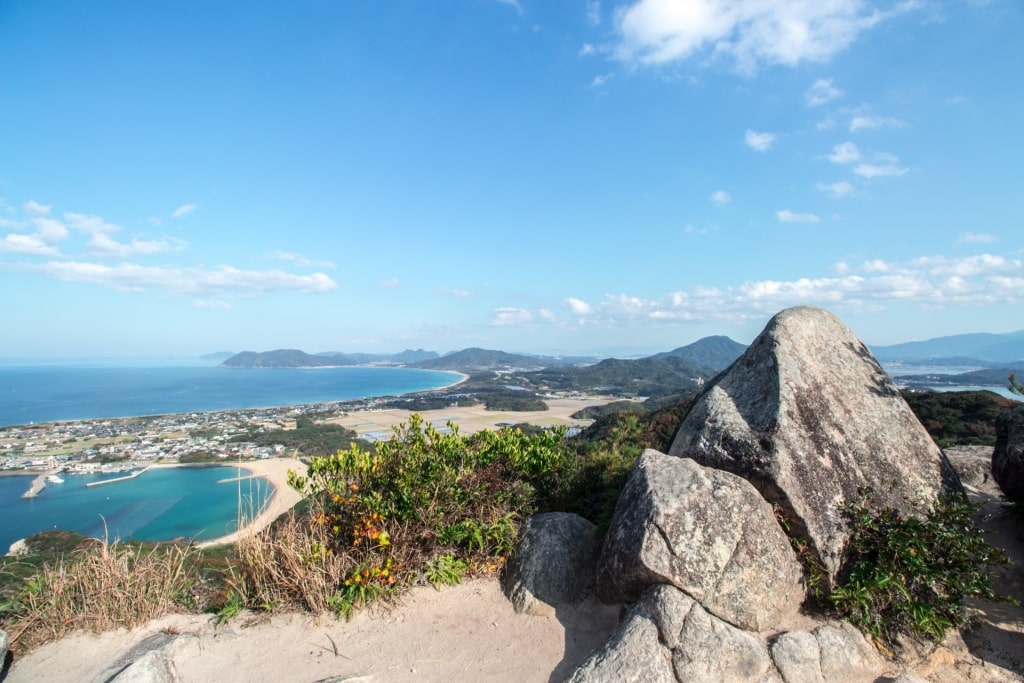
Itoshima Peninsula, Fukuoka
Only 45 minutes from Fukuoka’s Hakata Port, Itoshima is a beautiful coastal area known for its beaches and quiet countryside. It’s a popular getaway for Fukuoka residents looking for outdoor activity, scenic views, and authentic culture.
The peninsula’s beaches are a major draw, busy with swimmers, surfers, and sunbathers in summer. Hikers can explore the many trails, while cyclists enjoy the flat, scenic roads along the coast.
A famous Japanese landmark is the Sakurai Futamigaura, a pair of sacred rocks connected by a sacred rope. The area is also known for its fresh seafood, particularly oysters, and many craft shops.
Dazaifu Tenmangu, Fukuoka
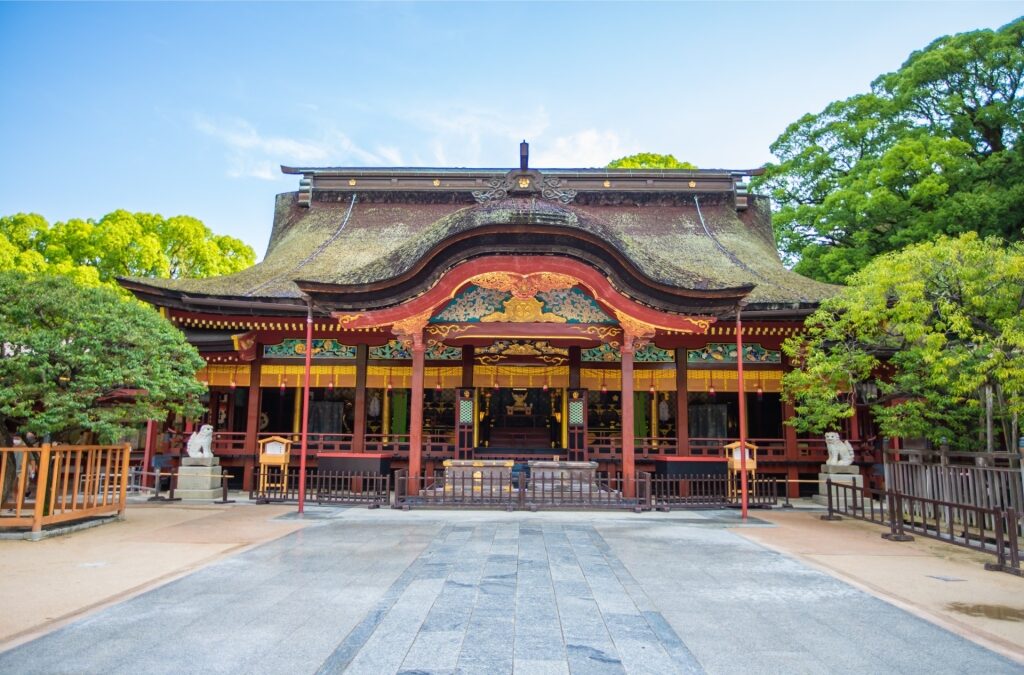
Dazaifu Tenmangu, Fukuoka
Dazaifu Tenmangu is a major Shinto shrine on the outskirts of Fukuoka. It is dedicated to a revered scholar and hence is very popular with students at exam time.
The serene atmosphere of this Japanese temple and its traditional architecture make it a place of great beauty. It radiates the sense of still being an important spiritual center for the local community.
A ritual here is to write a wish in whatever language you want on a small wooden plaque called an ema. These can then be hung up or taken home as a unique souvenir from Japan.
Katsurahama Beach, Kochi
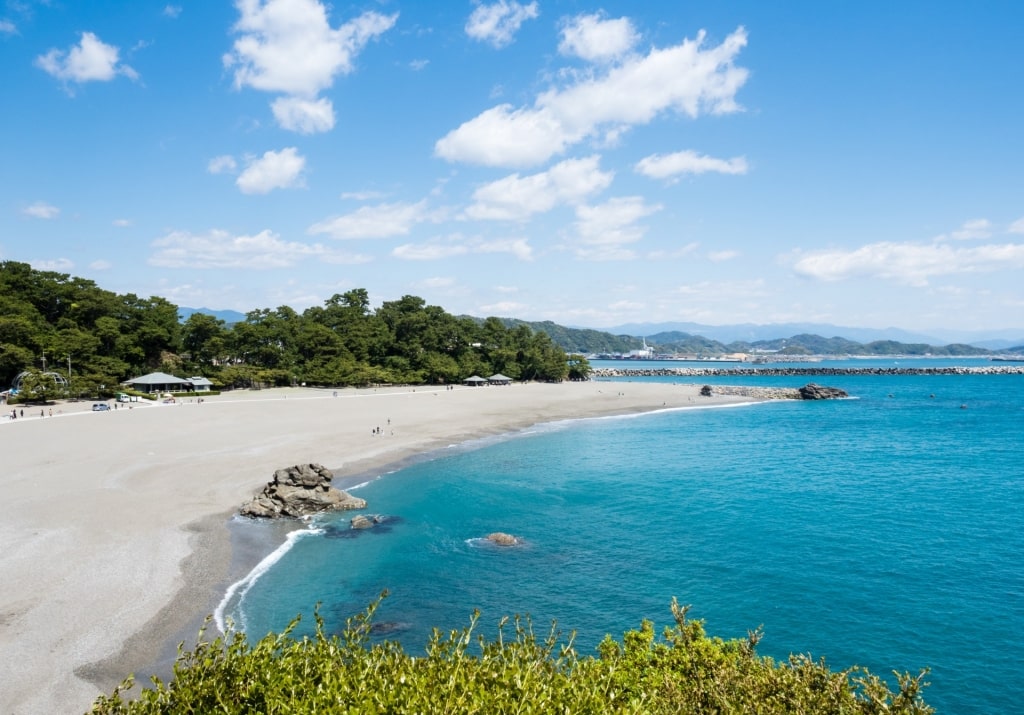
Katsurahama Beach, Kochi
Katsurahama is a beautiful sandy beach in Japan, backed by deep green pine groves. While strong currents make swimming inadvisable, helping keep the beach very much in the spirit of Japan off the beaten path, it’s famous for its views.
An important landmark here is the bronze statue of Sakamoto Ryoma, a major figure in the modernization of Japan. He was assassinated in 1867 by the shogunate, partly due to his stance against feudalism.
A museum tells his amazing story, including how he and his wife fought off an earlier assassination attempt. More relaxing is the Katsurahama Aquarium, which has everything from clown fish and penguins to Japan’s largest school of red-eyed akame fish.
Kumamoto Castle, Kochi
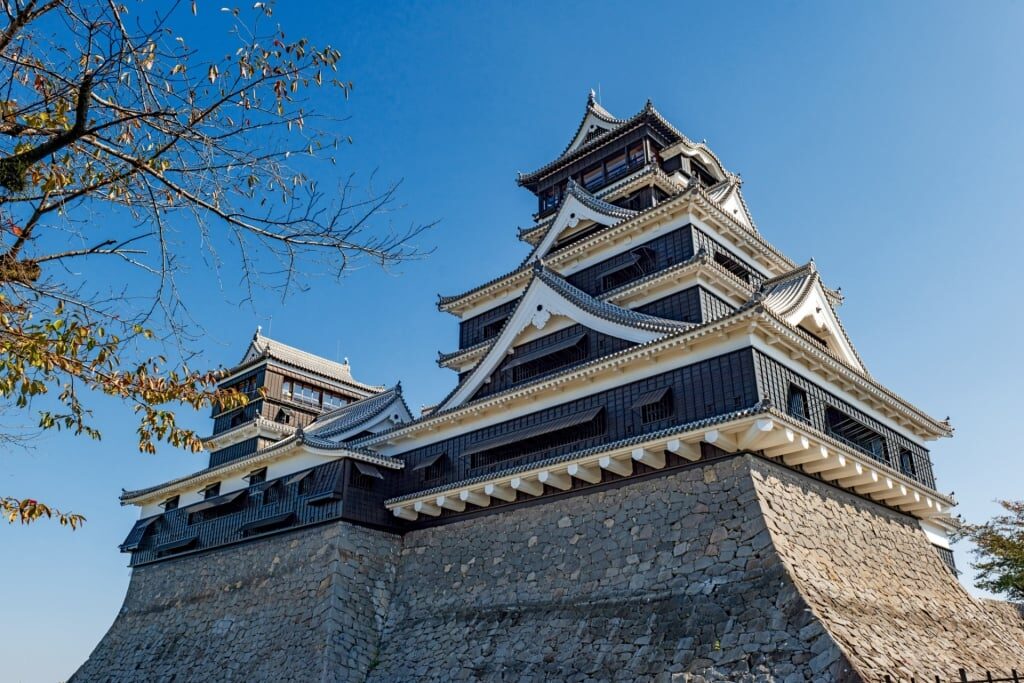
Kumamoto Castle, Kochi
Kumamoto Castle’s history starts in 1467, with a major expansion added in 1607. It is considered among the top three significant castles in Japan, the others being Himeji and Matsumoto.
With its steep walls and 49 turrets, the castle played a major role in the Satsuma Rebellion of 1877. The main keep is six stories, reaching an intimidating 99 feet in height.
That 1877 siege ended with most of the castle burnt down and much of what you see now is a faithful reconstruction. Some parts are being restored again after more recent earthquake damage but enough remains for a fascinating tour.
Gunkanjima, Nagasaki
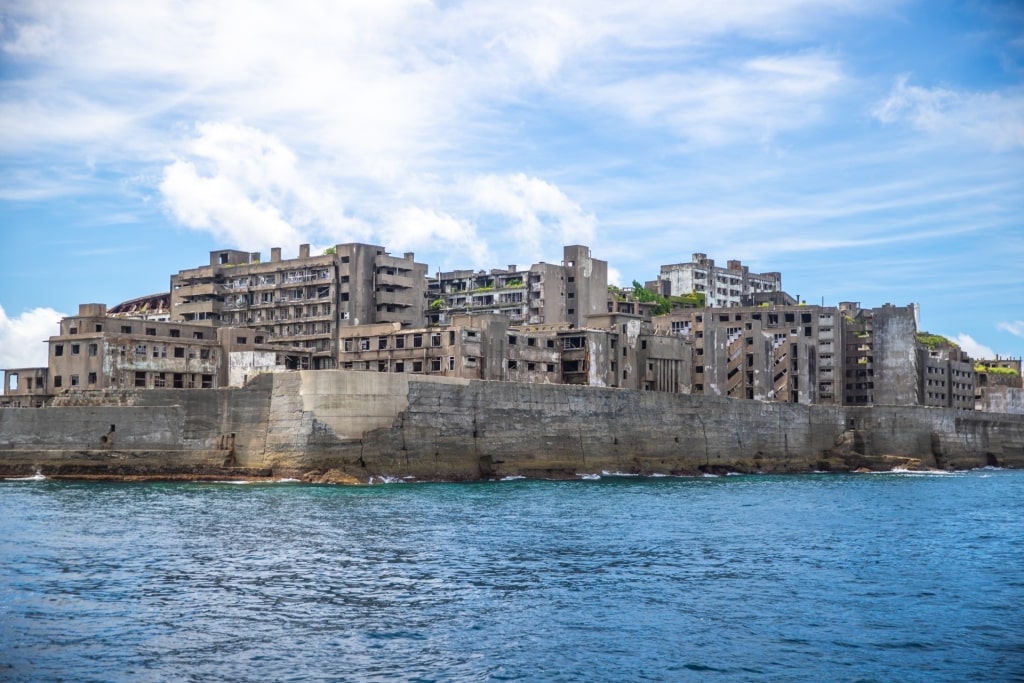
Gunkanjima, Nagasaki
Gunkanjima Island may already seem familiar from film or video games. This former coal mining city, now abandoned, is an atmospheric place of decaying industrial buildings and empty streets.
Officially called Hashima Island, it was named Gunkanjima, or “Battleship Island” for its distinctive, militaristic silhouette. At its peak in 1959, the island was one of the most densely populated places on Earth.
The 50-minute boat ride to Gunkanjima from Nagasaki is an adventure in itself. It passes shipbuilding yards with coastal views of Nagasaki and its port.
Read: Best Things to Do in Nagasaki
Miho-no-Matsubara, Shimizu
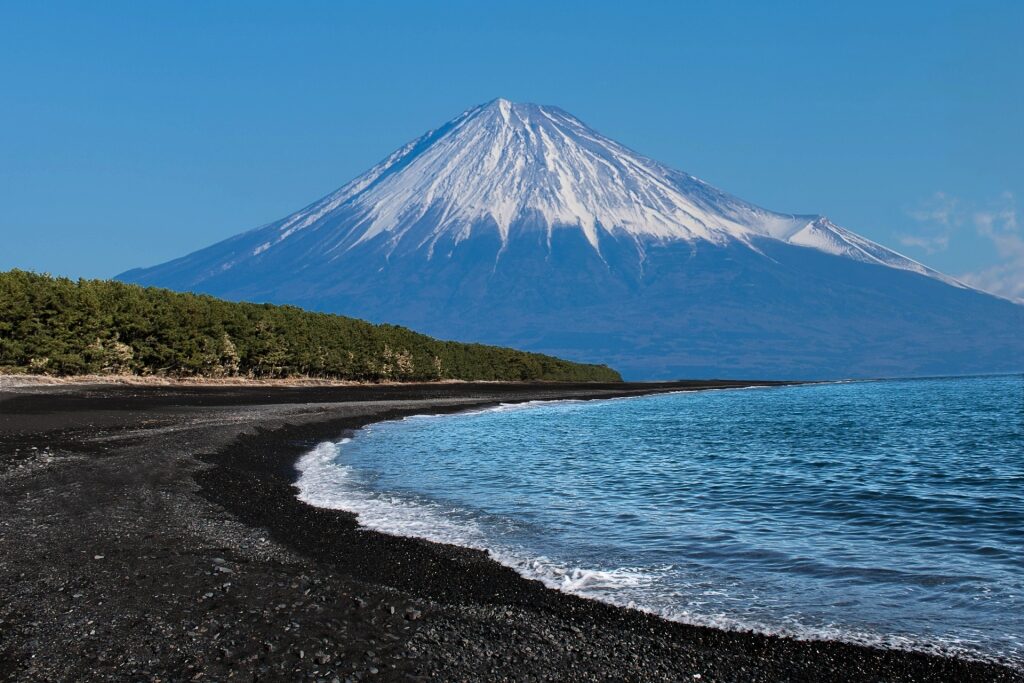
Miho-no-Matsubara, Shimizu
One of the “Three Views of Japan” listed by scholar Hayashi Gahō in 1643, Miho-no-Matsubara means “Pine Grove of Miho”. Thousands of pines stretch for more than four miles along the coast of Suruga Bay.
This famous view takes in Mount Fuji across the bay, a sight that has been painted for centuries. Photographers still enjoy the view of the peak framed by pines.
Adding to the view is a beach of black volcanic sand, making a striking contrast with the green pines and blue sea. Within the trees is a 1,200-year-old Shinto shrine dedicated to Miho, the god of safe sea voyages.
Shiraito Falls, Shimizu
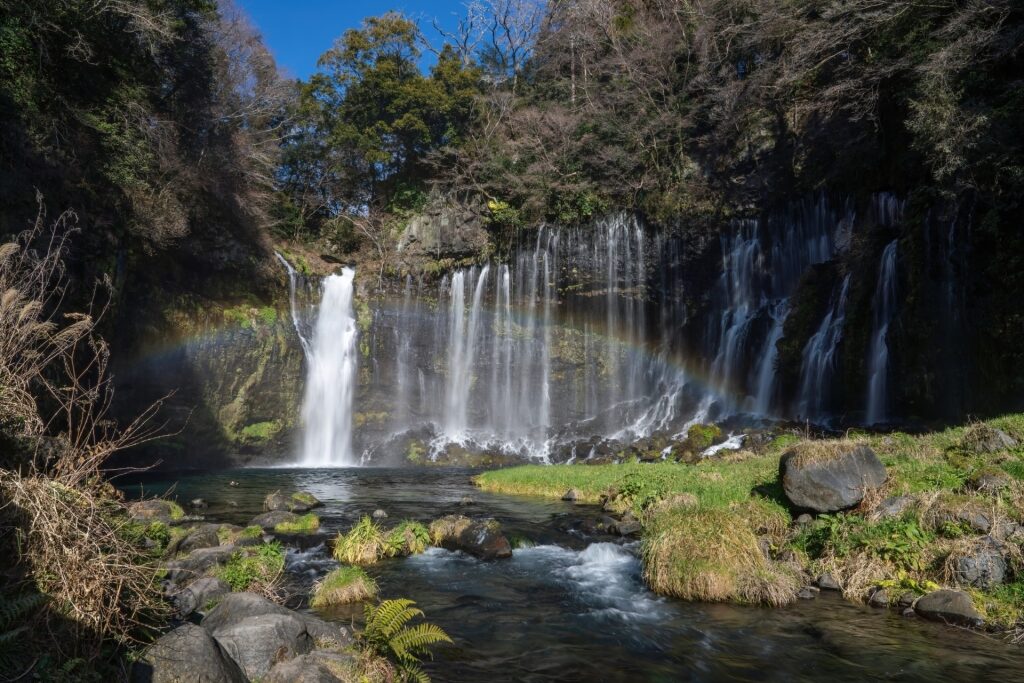
Shiraito Falls, Shimizu
Shiraito, or ”White Threads” Falls stand near the southwestern foot of Mount Fuji. It’s fed not by a river but by multiple springs flowing out of the mountain’s porous lava rock.
These many flows of falling white water give the falls its name. They contrast with the rich greenery around it, including a 300-year-old Banryu maple tree.
A popular ritual at the falls is nagashi somen, catching noodles with chopsticks as they flow in water down a bamboo chute. That may sound like a good way to go away hungry, but it’s great fun.
Uji, Osaka
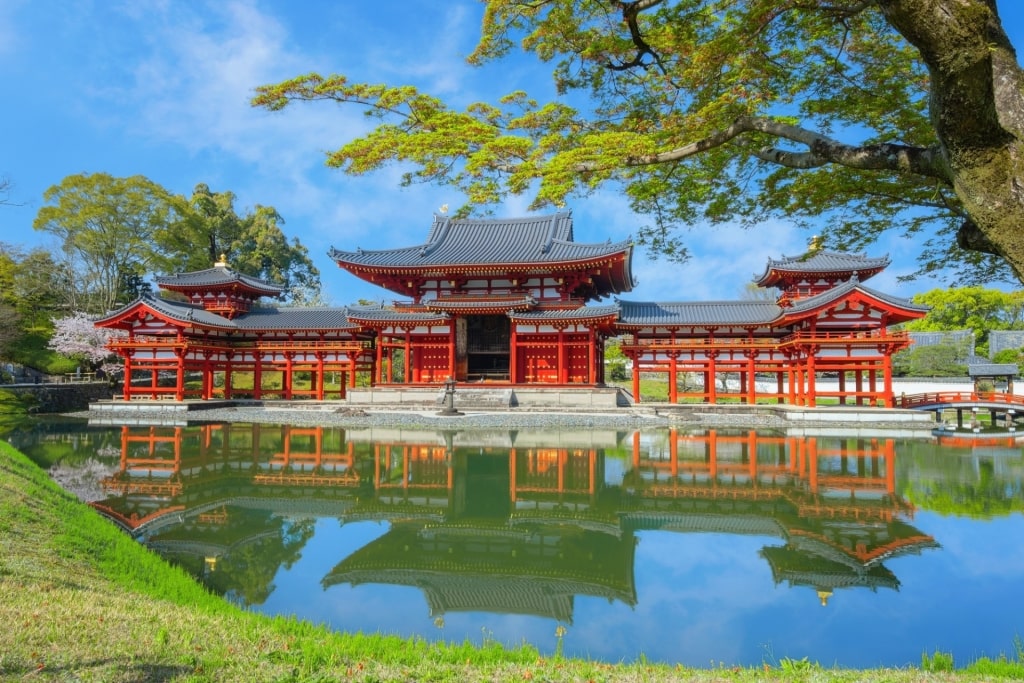
Uji, Osaka
Uji is a city standing between Kyoto and Nara that is famous for its high-quality Matcha green tea production. It’s also home to the Byodoin Temple, a UNESCO World Heritage site famous for its Phoenix Hall.
If the hall seems familiar, that may be because it has been on Japan’s ten yen coin since 1951. Originally a country villa for the Fujiwara clan, it was converted to a temple in 1052.
A highlight is the temple bell and the two rooftop phoenix ornaments, the originals of which are in the onsite Hoshokan Museum. The phoenix is worshiped by Buddhists as Buddha’s protector.
Kamakura Great Buddha, Yokohama
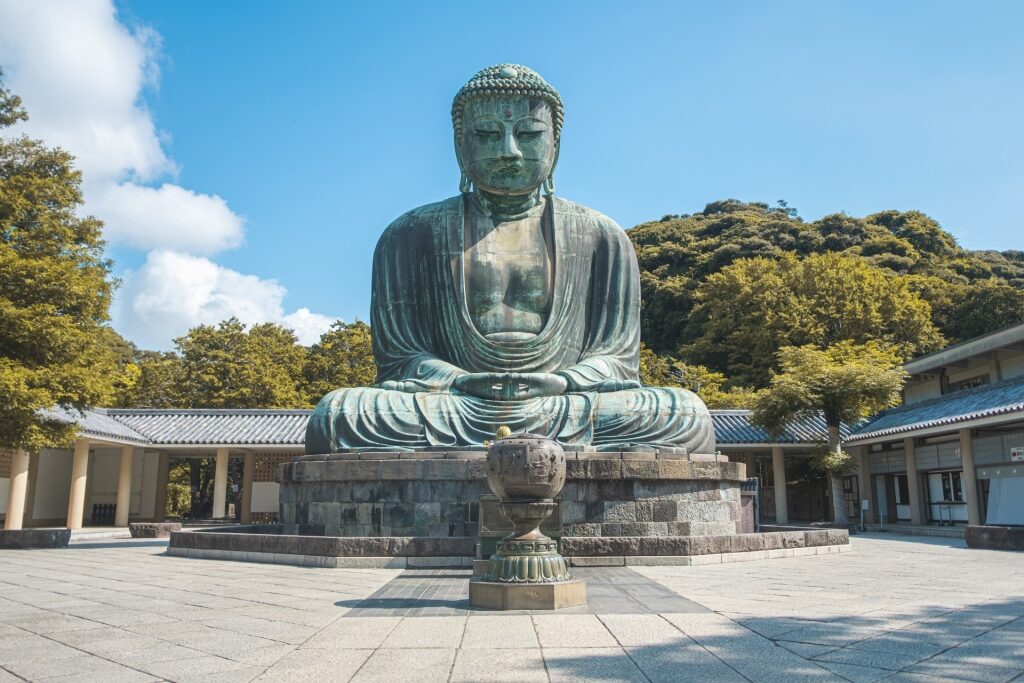
Kamakura Great Buddha, Yokohama
One of the best day trips from Tokyo is Kamakura, a coastal city known for its many Buddhist temples, Shinto shrines, and its Great Buddha statue.
This Great Buddha, or Daibutsu, stands nearly 45 feet tall and dates to the mid-13th century. Made of bronze, it’s one of the largest in Japan and stands in the grounds of Kōtoku-in temple.
If you have the time, the Daibutsu Hiking Trail connects Kotoku-in to Jochi-ji temple near Kita-Kamakura station. It takes about 90 minutes, following signs in Japanese and English, with great views over the coast.
Read: Three Days in Tokyo
Takehara, Hiroshima
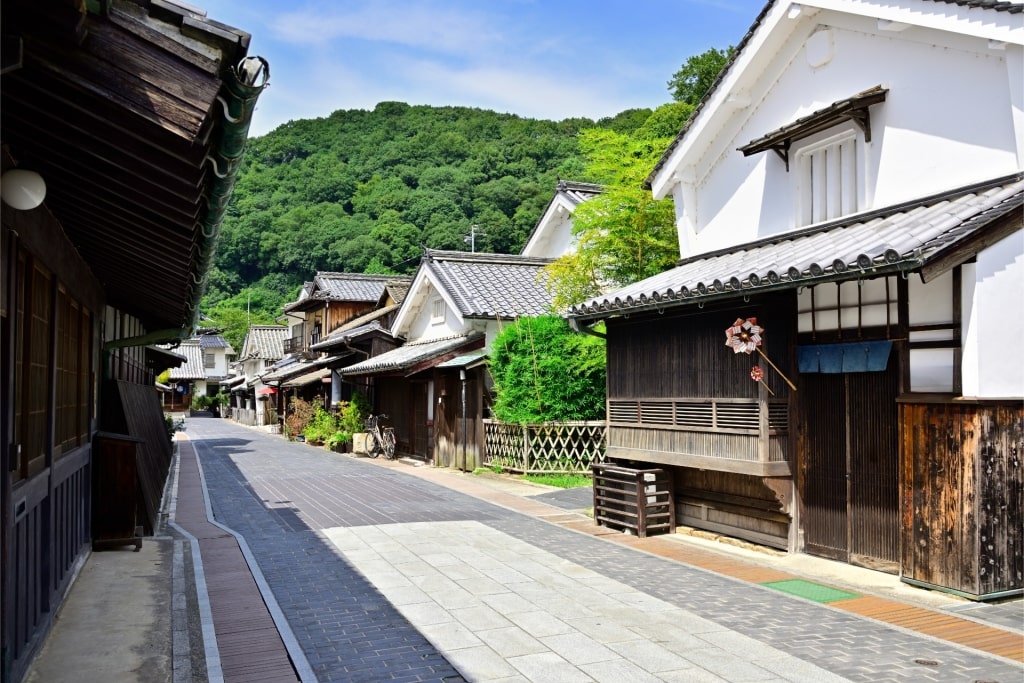
Takehara, Hiroshima
Takehara is a small city about an hour from Hiroshima, with a well-preserved historic district. It’s called “Little Kyoto” for its traditional buildings dating back to the Edo period of 1603-1867.
The city’s wealth at that time centered on the production of salt and sake. Several old merchant houses and Saihoji Temple, with its picturesque gardens, bring that period to life.
Takehara is still famous for its sake and several historic breweries can be found in the old town area. Many of the other wooden townhouses, or machiya, now house museums, shops, and cafés.
Ryugado Cave, Kochi
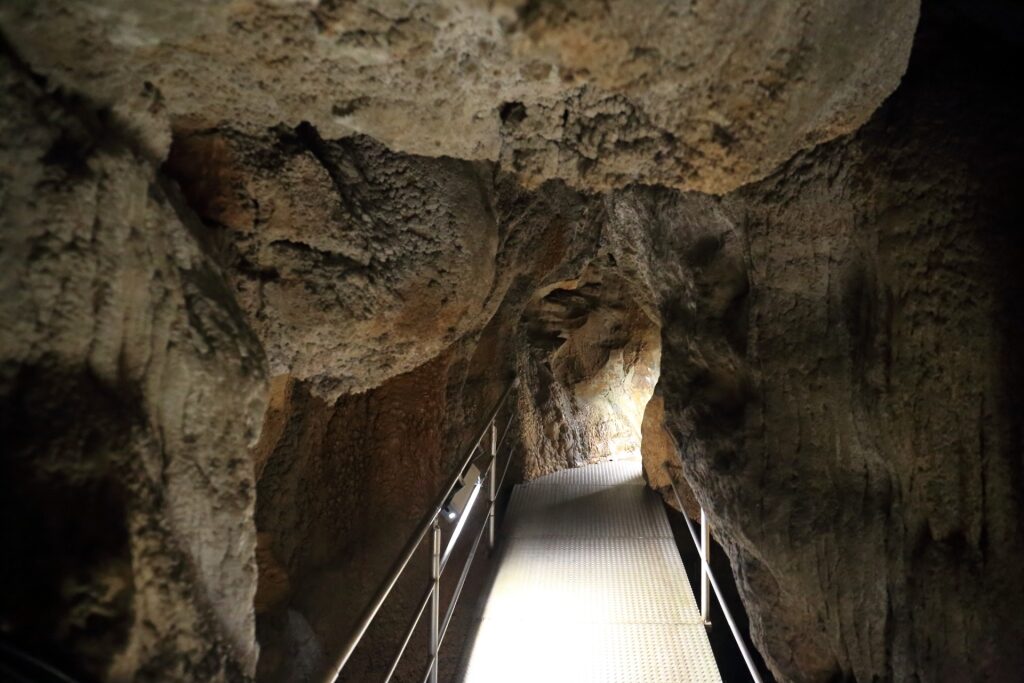
Ryugado Cave, Kochi
Ryugado—“Dragon’s Cave”—has been one of Japan’s National Natural Monuments since 1934. It was first discovered by local schoolchildren only a few years earlier.
The cave system stretches for roughly 2.5 miles, with a quarter of that open to the public. Visitors can expect to see a wonderland of stalactites, stalagmites, and underground waterfalls.
Archaeologists have discovered artifacts showing humans were living in Ryugado up to 20,000 years ago. You do need to be fairly fit and nimble to navigate the many steps and narrow, low passages here.
Kochi Castle, Kochi
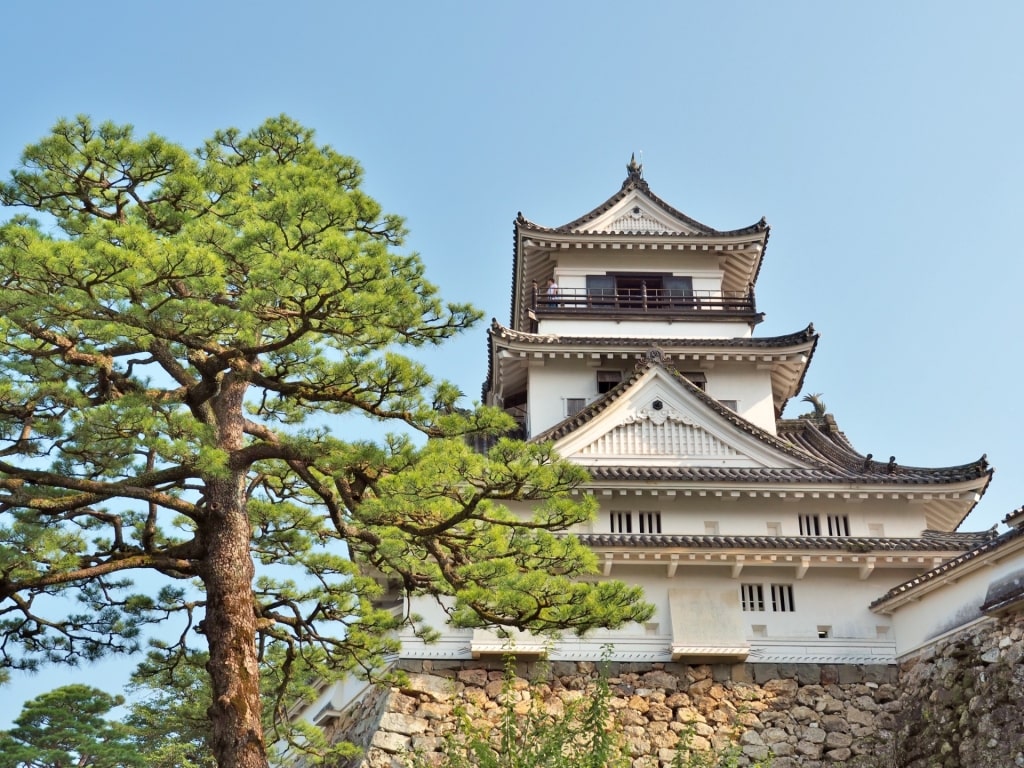
Kochi Castle, Kochi
Another of the only 12 original castles that still survive in Japan, Kochi is made up of 15 different structures. The main one, of course, is the central tower, finished in traditional black and white style.
A castle was first built on Otakasa Hill in the early 17th century. However, it has since gone through the usual bewildering number of fires and rebuilds that are typical of Japan’s historic sites.
Signs in Japanese and English will explain this history and the fortification design. Climb through the castle to explore its turrets and gates before taking in the panoramic views of Kochi City.
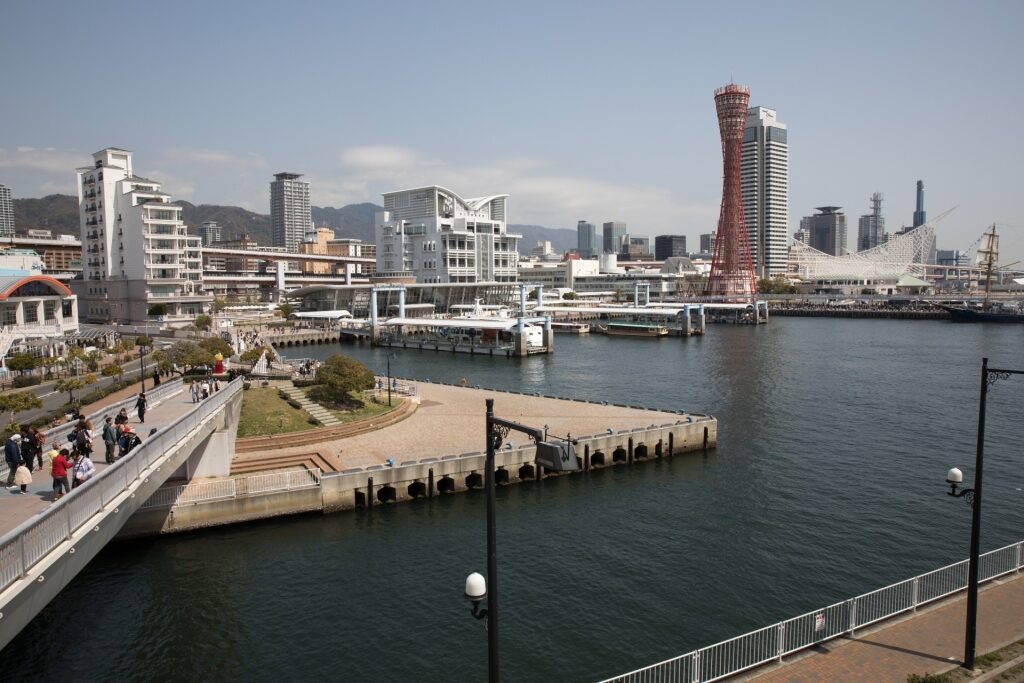
Kobe
Are you tempted to discover off-the-beaten-path Japan? Browse Celebrity’s cruises to Japan and plan your Asian adventure.
